#Railroading
Text

The commander of a large mounted force "invites" the party to join a quest on his king's behalf (Jim Holloway, from AD&D module I3: Pharaoh, 1st module in the Desert of Desolation series, written by Tracy and Laura Hickman, TSR, 1982)
#D&D#Dungeons & Dragons#Jim Holloway#AD&D#dnd#Pharaoh#guards#adventuring party#Tracy and Laura Hickman#railroading#Dungeons and Dragons#TSR#1980s
90 notes
·
View notes
Text
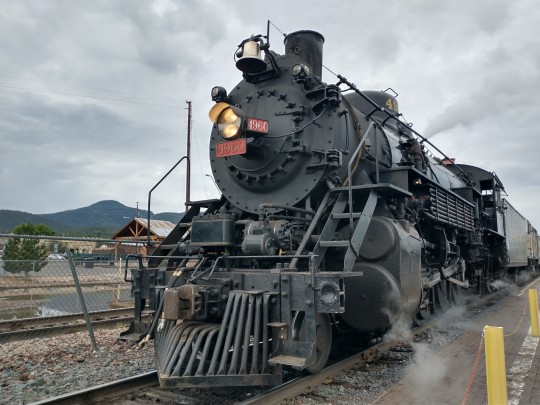




#Grand Canyon Railway#GCRY 4960#my photography#CB&Q 4960#birthday boy just turned 100 years old#railroading#steam locomotive#steam engine#train
115 notes
·
View notes
Text
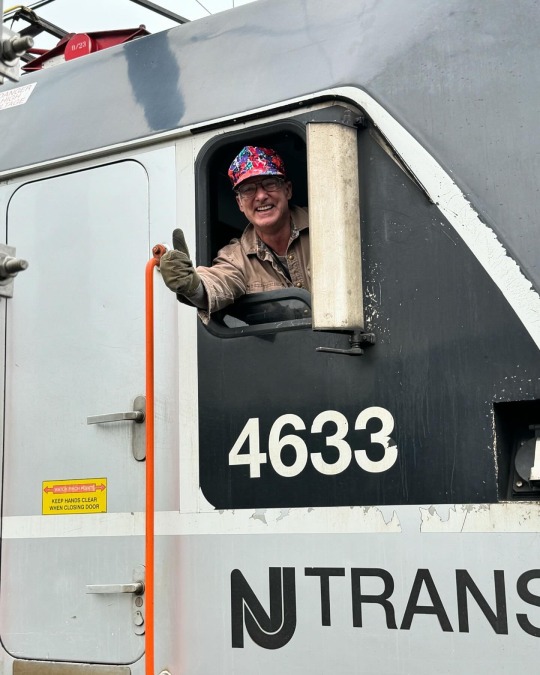
Station Stop! 🚂
33 notes
·
View notes
Video
Eastbound BNSF Intermodal Train at Floyd, MO by Zach Pumphery
Via Flickr:
Another snow squall moves through as BNSF Train Z SBDWSP4 13U blasts by the elevators at Floyd on the BNSF Marceline Sub. down Main Track 1 with engineer Scott Krause at the helm once again. I don't remember the last time we had such constant snow around here, but today another inch fell in the KC area, so I took advantage of the conditions. Locomotives: BNSF 5753, BNSF 4165, BNSF 5081, BNSF 7214, BNSF 7294 1-15-24 Floyd, MO
#Train#Railroad#Railfan#Railroader#Railway#Railroading#Railroads#Railfan Railroader#Locomotive#Snow#flickr
17 notes
·
View notes
Text
Last night I finished the prologue in ME2, got the Normandy, and went to the Citadel to get officially reinstated as a Spectre. I'm going to reiterate something I first said years ago, but with the option to visit the Citadel right away the story doesn't work as-is.
I've functionally just escaped from being held hostage for two years, but the dialogue is all about how Commander Shepard is "working" with Cerberus and there are rumors running wild about it. However, I haven't yet actually done anything for Cerberus, and literally the only people I've met are Tali and her team of Quarians. There's no rumors to start just yet because I haven't walked the streets Omega, or engaged mercenary forces, or carried out any of the Illusive Man's directives.
What they should have done was not make the Citadel available to visit until later in the game. Perhaps not until after Horizon, or the mission to the Collector ship. They could justify it with "Time is so pressing that we need to begin investigating things now!" or "Cerberus is persona non grata in Council space and they'll fire on our ship on sight!". Then, when conditions are right, have Anderson send that "Come see me on the Citadel" e-mail with a note that he's arranged safe passage because those rumors have finally reached him.
Since we'll already be a half-dozen missions in it makes sense that rumors are swirling about Commander Shepard returning from the dead. We'll have been flying around the galaxy on a Cerberus ship, working with Cerberus agents, so it makes sense that the Council and old allies are wary about us.
If they ask "Why didn't you contact me as soon as you were able?" we can (honestly) point out that we've had very limited freedom of movement and communication, but we came literally as soon as we could.
It just makes the story gel better and is less obviously railroaded. As it is, there are rumors reaching the Citadel about my return literally the day that I woke up.
10 notes
·
View notes
Text

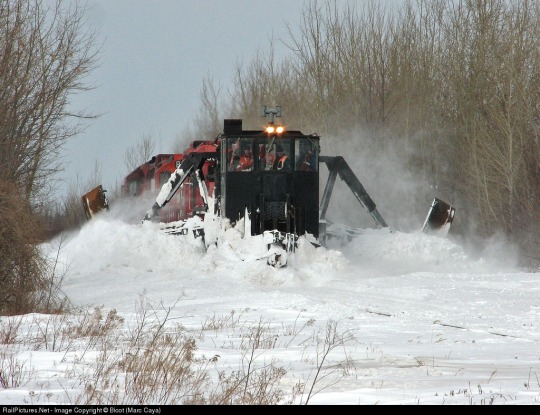
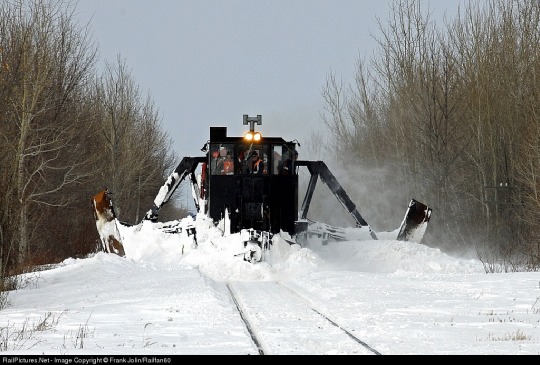

14 notes
·
View notes
Text
Your players are too unpredictable? Present any choice as a pure dychotomy. If anyone suggests an option outside it, start blaring like a smoke alarm.
248 notes
·
View notes
Video
Eastbound Amtrak "Missouri River Runner" Passenger Train at Lee's Summit, MO por Zach Pumphery
Por Flickr:
A Siemens Charger SC-44 leads Amtrak Train 314 into Lee's Summit on the UP Sedalia Sub. on time with several older passenger cars in the consist. The Ex-NP diner is followed by a trio of rebuilt baggage cars and both of Patrick Henry Creative Promotions' cars, "Evelyn A. Henry" and "Warren R. Henry". With the private car announcement made by Amtrak the day prior, who knows how often this will be seen in the future? Locomotive: IDTX 4623 Rolling Stock: PPCX 800149, PPCX 800148 3-29-18 Lee's Summit, MO
8 notes
·
View notes
Text

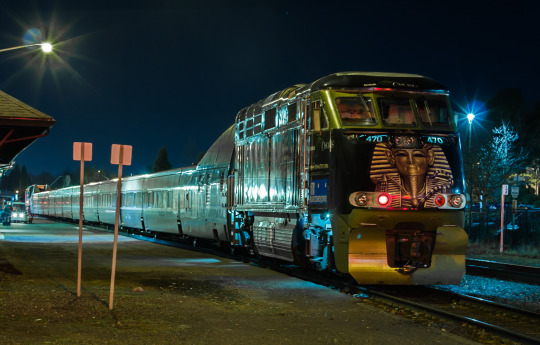

Amtrak Cascades - King Tut Wrap - March 2013
#railroading#king tut#amtrakcascades#amtrak#night photography#nightphotography#trains#eugene oregon#eugeneoregon#pnw#the great pnw#oregon
41 notes
·
View notes
Video
youtube
SP Rotary Snow Plow Walk Through
8 notes
·
View notes
Text
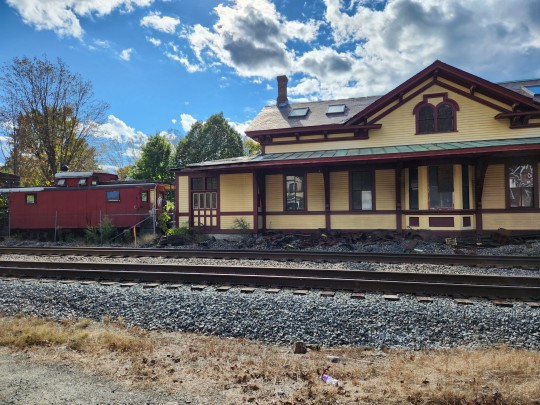
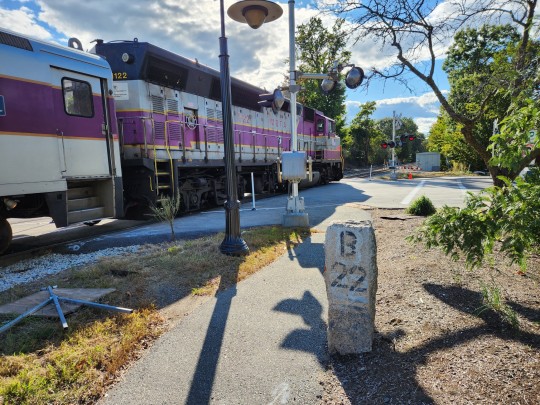
Fitchburg Line sights
5 notes
·
View notes
Text
#shitpost#meme#railroad#railroading#trains#train memes#Southern Pacific#Southern Pacific Railroad#country music#railroad meme#SP
24 notes
·
View notes
Text
🎥 by @patrickkoconnor 02/07/24
22 notes
·
View notes
Text


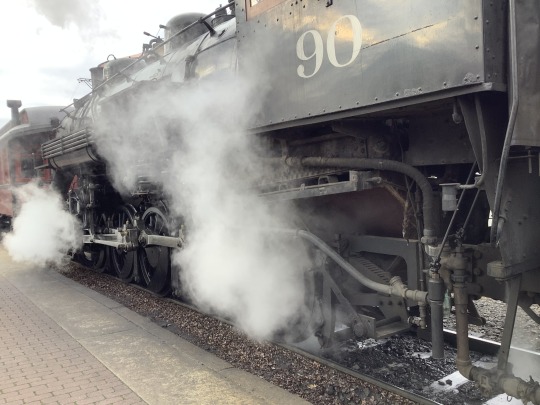
Steam is beautiful :O
Also TIL #90 has blind center drivers (see first photo)
3 notes
·
View notes
Text
For those of us out there who long for good rapid transit and walkable cities in car-centric North America, it can be really easy to doomscroll and it can seem that America is completely incapable of divorcing itself from car culture. But I want to let you all know: right now, at the end of 2022, it’s a great time for rapid transit. So much new construction is going on as we speak, and many new projects are almost finished. I want to go through some of the new projects that have opened over the past 12 months, or will open sometime in the next 12 months, and I want to remind you all that good transit is possible, and is becoming more of a reality with each passing day.
Here’s the most significant new construction from the past year:
The DC Metro finally opened Phase 2 of the Silver Line extension, a long awaited line that extends the DC Metro into a well populated part of Virginia. Additionally, the extension has a station at Dulles International Airport, one of the most major airports in the country.
The Los Angeles Metro opened the first half of the new Crenshaw Line (aka the K line), adding a whole new line and 6 new stations (7, counting the new lower level at the existing Expo/Crenshaw station). The new K line returns service to an area of Los Angeles that had not seen passenger rail service in several decades. The second half of the extension is still under construction, and will connect the K line to the existing C Line as well as LAX.
San Francisco’s MUNI Metro, the system that operates SFs light rail, trolley, and cable car systems, opened their brand new Central Subway. The Central Subway travels roughly North-South through the heart of the city, perpendicular to the existing Market Street Subway. The new subway line will provide service to the densely populated but underserved Chinatown neighborhood, among others.
A whole new system opened this year! Honolulu just opened the Honolulu Rail Transit, operated by the HART, is the first major rail rapid transit in the US to feature platform screen doors and driverless trains.
The MBTA (Boston) just opened the final phase of their Green Line Extension! The GLX, as it is called, brings rapid transit service to the heart of the densely populated town of Somerville, MA. 7 new stations opened as a result of the extension, with one station being rebuilt entirely!
During the summer, Amtrak extended its Ethan Allen Express route to Burlington, Vermont, with two stations in between. The extension returned intercity rail service to Burlington Union Station and the heart of the city for the first time in about 50 years!
The Long Island Rail Road (LIRR; NYC), North American’s busiest regional rail system, completed a project which improved its mainline by adding a third track. The third track is a much needed improvement that allows for more efficient and frequent train operation on a heavily used corridor.
Tempe, Arizona opened a downtown streetcar earlier in the year. The line goes around downtown, and makes the city center more easily walkable, as well connecting to the Phoenix Valley Metro.
Minneapolis opened their new D Line BRT service, a rapid bus service that is but a small part of a massive ongoing transit plan for the Twin Cities
Chicago opened a new flyover junction for the Brown Line, which will speed up and improve service on the Brown, Red, & Purple Lines
Upcoming
A whole new system is opening soon! Honolulu, Hawaii is soon to open the first phase of their new driverless elevated rapid transit. It will be the first non-tourist passenger rail in the state in several decades!
The LIRR will soon open a massive new underground line that allows trains to access Grand Central Terminal in the heart of Manhattan. The new terminal will also relieve pressure from the over crowded Penn Station.
The NYC Subway (MTA) has received its first shipments of its new R211 subway trains, which will be a much needed new fleet of modern rolling stock. The new trains will fill the gap left by the retirement of the 59 year old R32s. Additionally, the MTA also received several sets of the R211T, a variation on the R211 which includes an open gangway between subway cars, like an accordion/bendy-bus.
Seattle’s Link Rapid Transit is currently making major progress on several new extensions, with most of them estimated to open around 2024. The existing line will be extended in both directions. Additionally, the existing line will be complimented by a second line! There will be a total of nineteen (19!!!) new stations, as well as six (6) new stations on the Tacoma Streetcar!
CalTrain, a commuter/regional rail system that serves the San Francisco peninsula, is electrifying their system. When completed, it will bring faster, quieter, and more eco-friendly rail service to the SF Peninsula. Ignoring rapid transit, CalTrain will host the first electrified main line passenger trains to operate west of the Mississippi in several decades.
The TTC (Toronto) is currently making huge progress on their newest train line, the Line 5 Eglinton. It is a brand new light rail line that will have 24 stations along Eglinton Ave in Toronto, and will have connections to the Line 1, Line 2, and Line 3.
The TTC is also constructing the Line 6 Finch, another brand new light rail line north of Toronto! It will run west from the Line 1 along Finch Ave, and will have 18 new stations!
Montreal’s new REM (Réseau express métropolitain / Metropolitan Express Network) is almost ready to open its first phase! The REM is a new light metro line that has one line and three branches, with twenty-six (26!!!) new stations. The line will connect downtown to the airport and several major suburbs.
The MBTA is currently constructing a new commuter rail line that, on two branches, will provide service to Fall River and New Bedford, two notable cities on the south coast of Massachusetts.
Vancouver’s Skytrain is currently working on a massive new expansion of their Millenium Line to travel west and serve a densely populated but previously underserved section of the city.
The LA Metro is currently working on a new subway tunnel through downtown that will connect the A, E, and L lines. When the project is completed, the E and L will be merged into one line.
Mexico City is currently constructing a new commuter train to traverse the heavily traveled corridor between Mexico City and Toluca.
Construction is currently ongoing for the Southwest LRT Line in Minneapolis, a large extension to the currently underserved southwestern parts of the Twin Cities
Calgary is currently most of the way through construction on their new Green Line, which will be the third Light Rail line to serve the region.
Ottawa’s Trillium Line is currently closed for modernization and is expected to reopen this year
Chicago has an ongoing project to overhaul the infrastructure on the aging Red and Purple Lines
Additionally, there have been *countless* new stations constructed and a multitude of other minor construction projects that will have some major effects. Here’s some highlights:
The SEPTA (Philadelphia) added Wawa station to its regional rail system
The MBTA is currently most of the way through construction on a new station to serve the city of Pawtucket, Rhode Island
In the fall, the LIRR opened a new station called Elmont-UBS Arena
NYC Ferry established a new service to Coney Island
A new platform at Baltimore Penn Station
Much, much more
Lastly, let’s not forget the fact that a massive number of new transit lines and rail extensions have opened over the past few years, including major openings all over the country. I’ve definitely forgot something, and the fact that I have is because there is so much that has come out of 2022. We’ve come a long way, but we still have a long way to go. From where we are, rail transport and public transit in North America is only going to improve, and I can’t wait.
#public transit#trains#public transport#railroading#railroads#railway#boston#philadelphia#new york#new york city#mtanyctransit#mbta#walkable cities#walkability#urban planning#city planning#long post#wall of text#good vibes#positivity#rail rapid transit#wmata#septa#nycta#minneapolis#minnesota#massachusetts#new england#hopeposting#i like trains
13 notes
·
View notes
Text
Platform heights
There’s a lot of talk in german train twitter about a recent study that claims to show that Germany is way behind in railroad interoperability and keeps blocking european train connections. The study makes some valid points when it comes to train approval, some useful ones when it comes to ETCS, completely ignores infrastructure investment, and says complete bullshit about railroad electrification.
Specifically, it claims Germany is blocking things because it uses 15 kV 16.7 Hz AC instead of the standard of 25 kV 50 Hz AC. The problem with that is that 25 kV is by no means a standard; most countries that have it also have huge swathes of 1.5 or 3 kV DC. Also, 15 versus 25 kV is the simplest thing to get working together, to the point where you can’t actually buy a pure 15 kV or pure 25 kV locomotive anymore; all of them can do both these days, including several that officially support only one.
Anyway, the final point, and the one that’s gotten the most discussion, is platform heights. So let’s discuss that, and let’s do this with a specific example: The station of Düren. What height do you think the platforms there have, measured from the top of the rail?
It’s a trick question: This station has four different ones, specifically all the ones that are in widespread use in Germany.
Historically speaking, Europe has always had low platforms, nominally about 33 cm above top of rail. Düren's incredibly bleak platform 23 is one of the few remaining examples of this in the region that I can find. It’s only used by the local trains north to Jülich and Linnich.

To get into any train from that, you need to walk up steps. Here’s how a classic, now thankfully outdated train would do that:

You can see the staircase under the white doors (the final steps are hidden behind the door here). This train can be used with platforms as low as 33 cm, but you’ll have to climb a lot, which is annoying for most people, and completely inaccessible to persons with reduced mobility, e.g. wheelchair users, parents with push chairs, elderly people, people with lots of luggage, people with bicycles… On the plus side, it is cheap.
(Aside: 33 cm is also used by some low-floor tram train systems, which do offer level boarding there. That causes all sorts of fun issues, because officially those platforms shouldn’t be built anymore…)
This situation wasn’t and isn’t great, so we got several different ideas for fixing it. The first and simplest of them all: Make the platform about 20 cm higher (the standard is 55 cm), so you can get rid of the last step. The cool thing about this is that you can, these days, get trains that allow step-free access at this level. As a result, a lot of lines were rebuilt to this standard, some quite recently, including most of the local lines that go out from Düren. For the one heading south, platform 4A was built at that level.

55 cm is also a good number because it’s very close to the floor height of double-decker trains, so you can get step-free access to double-decker trains (provided you put the doors on the floor, of course) with that level.
On the other hand, if your goal isn’t to make local lines step free for cheap, but rather to get people into long-distance lines more comfortably, then you may want to, literally, go up another step and build platforms at 76 cm (again above top of rail). This gives you relatively comfortable access with just one or two steps into e.g. ICE trains, or into double-decker trains with doors on the intermediate level. It does not give you step-free access, though.
However! All the trains that can be built step-free at 55 cm can also be built step-free at 76 cm. For example, here’s the Bombardier Talent at 55 cm:
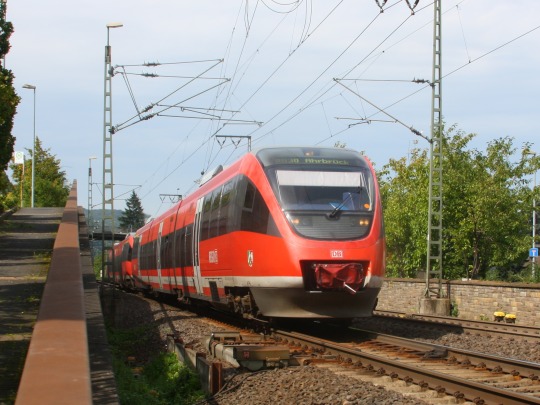
And here (a shorter one) at 76:
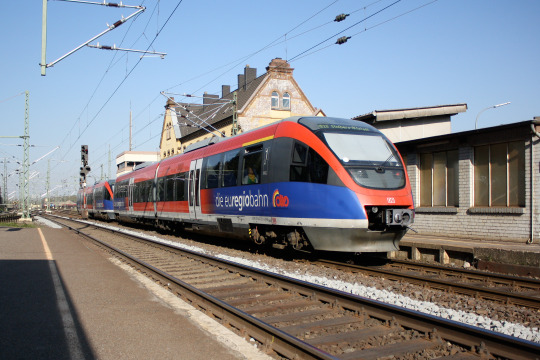
The difference is barely visible from the outside. On the higher one, the white door doesn’t go down as low, and the windows in the middle low-floor section are aligned with the top of the windows in the door, rather than the bottom. Both of these trains give you full step-free access at every door. (Though both of these don’t have gap fillers, sadly). The second type actually does come to our example station Düren once an hour.
These days you can also get double-decker trains that have step-free access to the lower level from 76 cm platforms. They do this by raising the floor, which has the downside that the upper level above the doors is rather cramped. Here’s an example in a Siemens Desiro HC, a type that also runs through Düren (though not this one in particular).
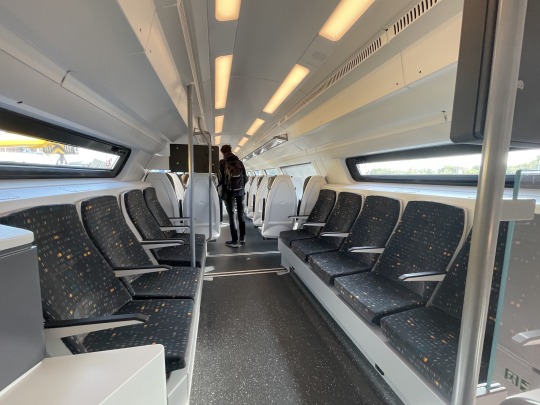
There are also now long-distance high speed trains that have entries at 76 cm level, in particular trains from Talgo (which DB recently bought some of) and the SBB Giruno. It seems that making them 55cm instead is currently not really possible, and it would mean adding lots and lots of internal ramps.
The majority of platforms at Düren are at 76 cm level, to serve double-decker trains and the one ICE per day that stops here.
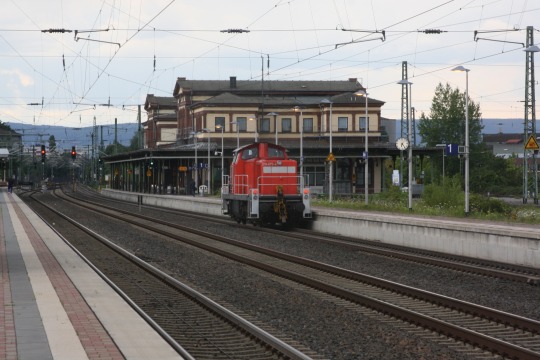
But wait, that’s not all! The first place where the low platforms became a problem was with rapid transit systems, like S-Bahn networks, simply because climbing up the stairs slowed down boarding at each halt. As a result, many S-Bahn systems were designed around a platform height of about one meter above rail top (the modern standard is 960 mm). Some newer S-Bahn systems went with 76 cm instead. Some particular geniuses designed systems with 76 cm platforms but used 96 cm cars, going “eh that one step won’t be too bad”; those are all being refitted with 76 cm cars these days. But the S-Bahn Cologne (that is to say, the part of the S-Bahn Rhein-Ruhr that’s centred around Cologne) went the whole way, with 96 cm platforms and 96 cm trains. Oh, and Düren is the end point of one line of that network, so it has a 96 cm platform.

So, in short, it’s a mess, and it has brought us new words like “Bahnsteighöhenzielkonzept” (platform height target plan) to try and sort it all out. As long as trains stop at the right platforms, everything is fine, but as networks grow and connect, it becomes an issue.
For example, there is a newly reopened line from Düren to Euskirchen, the Bördebahn (I talked about that one before). It uses 55 cm trains, because that’s what the operator has already bought for their other lines, and thus all platforms there were built to 55 cm standards. Some aren’t finished yet but they will be by December. It’s all fine… except there aren’t enough 55 cm platforms in Düren. Platform 4A is used by other services already, so the Bördebahn starts from regular platform 4. It’s literally the same track, but the platform in that area is built to 76 cm standard (there are steps between the different parts), so to get into the train there, you have to step down. The train driver has a folding ramp, so wheelchair users can get in and out, but it’s annoying.
Moreover, there are plans to electrify that new line, and combine it with a different one, the Euregiobahn, which will also get electrified. Very interesting plan! The problem, though, is that while the Euregiobahn is a similar local service over reopened lines, it was built by a different local authority, and it uses 76 cm platforms and trains. So if you want to combine the two, then ideally, you’ll have to rip up all the recently built 55 cm platforms along the Bördebahn and replace them with 76 cm ones. Fun!
There is nonsense like that all over Germany. Not even just Germany, just all over the immediate region. A couple dozen kilometres down the line, we get to the line Neuss-Bedburg-Horrem, another typical regional line. It will get massive investment soon, and get integrated into the local S-Bahn network! The problem is, what height should the platforms be? The S-Bahn Cologne, managed by local authority NVR, uses 96 cm. The S-Bahn Rhein-Ruhr, managed by local authority VRS, used to have a mixture, with some platforms at 96 and some at 76, and they recently decided to standardise on 76 and rebuild the few that were 96 already. Those are not actually separate networks, several lines cross into both areas, but they’re managed by different people with different opinions, and so they get different platforms. The Neuss-Bedburg-Horrem line happens to pass through both areas, and the result is: The line will be split. 96cm Trains from Cologne travel to Bedburg, and there people can get into a 76cm train to Düsseldorf. Now, nobody will do that specifically, but if you live one station north of Bedburg and want to go south to Cologne, or one station south of Bedburg and want to go north to Düsseldorf, the line has just become considerably less useful.
The rough outline is that the east of Germany uses 55 cm almost exclusively; the west prefers 76 cm but uses 55 cm on more rural lines; and it’s basically all a bit of a mess.
The study that prompted all this was about international long-distance travel, and there it gets interesting. The claim of the study is that everyone in Europe has settled on 55cm, except for Germany. That’s just not true. Yes, many countries have, like Switzerland, Austria and France. But quite a few of our neighbours, like Belgium and the Netherlands, have gone with 76 cm as well.
Real talk, personal opinion stuff here: If I had to pick one standard, I’d probably pick 55 cm because of the use in France, Switzerland, Austria, and the better experience in double-deckers.
But it seems like the solution is not going to be to settle on one standard; it’s going to be trains that have doors at multiple levels, with ramps in between them. There are a number of those in service already, and I suspect this will get more. Even those aren’t a magic bullet forever, but they should make the whole thing manageable.
In conclusion: What height the platforms in your rail system have is largely irrelevant, as long as you keep them all the same. As a proud citizen of Aachen, the conclusion is obvious: Whatever you do, don’t be like Düren.
17 notes
·
View notes